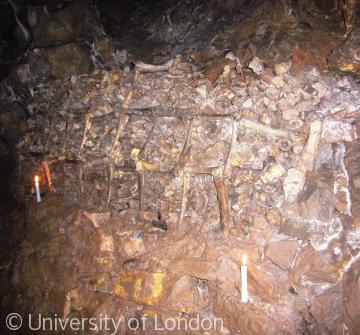Banwell Caves

The village of Banwell in the Mendips is in an area rich in caves but the most famous is probably the Banwell bone cave discovered in 1824. Miners were trying to locate a stalactite cave, first discovered in 1757 but lost to a landslip, at the instigation of the vicar who thought paying visitors might produce much needed funds for a school in the parish.
The caves were on an estate owned by George Henry Law, bishop of Bath and Wells who seeing the vast number of ancient animal bones in the newly discovered cave thought they were the remains of the animals that died in Noah's flood.
The cave attracted visitors and the bishop had the grounds laid out with follies and grottos labelled with tablets bearing religious verses. Many of the rich and famous as well as local people came to see the caves and accommodation was provided on the site, now a private house. Bishop Law retired to the house just before his death in 1845.
The caves were managed by William Beard until 1865 when he retired aged 93. It was he who was responsible for the elaborate arrangement of the bones within the caves. Many bones were given away or taken as souvenirs by visitors and have ended up in many collections.
The caves are occasionally opened to the public by the Banwell Caves Heritage Group and are still lit largely by candles as they were when first discovered.
Content derived from research undertaken as part of the Victoria County History project









